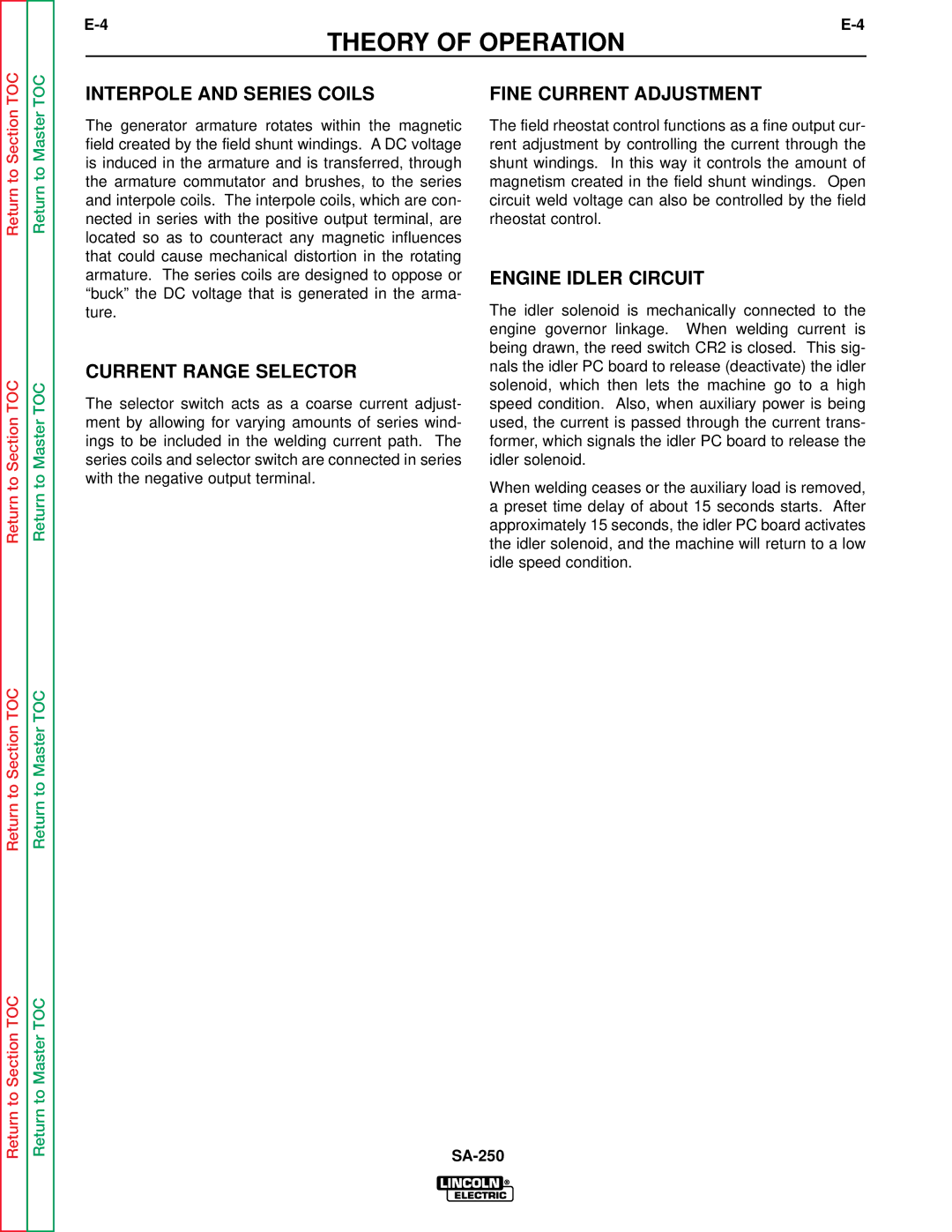SVM128-A specifications
The Lincoln Electric SVM128-A is a cutting-edge welding machine designed to meet the demands of both professional welders and DIY enthusiasts. This versatile welding power source brings together advanced technology and robust design, making it a reliable choice for various welding applications.One of the standout features of the SVM128-A is its capability to perform multiple welding processes. It supports MIG, TIG, and stick welding, allowing users to tackle a wide range of projects with ease. This multi-functionality makes it ideal for professionals working in different industries, as well as for hobbyists who enjoy diverse welding tasks.
The SVM128-A is equipped with inverter technology, which enhances its performance by providing a more stable arc and improved energy efficiency. This technological advancement contributes to lower operational costs and allows for a more consistent weld quality across different materials and thicknesses. Additionally, the inverter technology enables the machine to be lightweight and portable, making it convenient for jobs that require mobility.
Another prominent characteristic of the SVM128-A is its user-friendly interface. The machine features intuitive controls and a digital display that allows operators to easily set the desired welding parameters. This simplified setup helps reduce the learning curve for new users while also offering precise control for experienced professionals.
The Lincoln Electric SVM128-A is designed with durability in mind. Its robust construction ensures that it can withstand the rigors of frequent use in demanding environments. The machine is also equipped with various safety features, including thermal overload protection and a duty cycle rating that prevents overheating, ultimately extending its lifespan.
For optimal performance, the SVM128-A provides adjustable output options, allowing users to customize the welding parameters based on their specific needs. This flexibility makes it suitable for welding various metals, including steel, aluminum, and stainless steel.
In summary, the Lincoln Electric SVM128-A combines versatility, advanced technology, and a user-friendly design. With its capability to perform multiple welding processes, lightweight construction, and durable features, it stands out as an excellent option for anyone looking to achieve high-quality welds. Whether for professional or personal use, the SVM128-A is poised to deliver reliable performance and exceptional results.

